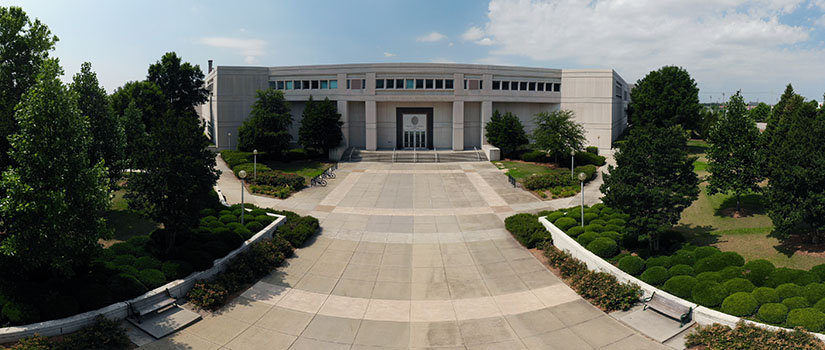Dan Cacuci, professor of mechanical engineering, has published a new book on his methodology to overcome the curse of dimensionality in the sensitivity and uncertainty analysis of models of physical systems. His book, “The Nth-Order Comprehensive Adjoint Sensitivity Analysis Methodology, Volume I,” was released in July.
Cacuci is credited with introducing his methodology to the earth, atmospheric and other sciences. His work has earned him every award given by the American Nuclear Society as well as the Lawrence Award, informally known as the Nobel Prize for engineers.
The book is the first of a three-volume work commissioned by Springer Publishing. Cacuci’s work was inspired by theoretical physicist Eugene Wigner, who conceived the methodology for computing first-order sensitivities that became widespread in the nuclear engineering community.
“I might seek to contextualize Dr. Cacuci’s breakthroughs by quoting the late Donald Rumsfeld, former U.S. Defense Secretary: ‘There are known knowns. These are things we know that we know. There are known unknowns. That is to say, there are things that we know we don't know. But there are also unknown unknowns. There are things we don't know we don't know,’” says Travis Knight, professor and interim chair of the Department of Mechanical Engineering. “I believe the significance of Dr. Cacuci’s work is to shed light on some of these unknowns and make us all wiser and more efficient regardless of our particular field of research.”
The computational models of physical systems comprise parameters, known as independent and dependent variables. Because the physical systems themselves are seldom known precisely and most of a model’s parameters stem from experimental procedures that are also subject to uncertainties, the results predicted by computational models are also imprecise. Analyzing the reliability of the model responses requires the computation and use of the functional derivatives (called sensitivities) of the model’s response to its imprecisely known parameters.
“However, conventional methods for computation can provide only approximate, rather than exact, values for the sensitivities,” Cacuci says. “The computation of higher-order sensitivities by conventional methods is subject to the curse of dimensionality, the phenomena in which the number of computations increases exponentially in the respective phase-space.”
Cacuci explains that Wigner’s methodology was developed within the context of the linear neutron transport equation that governs the neutron distribution in nuclear reactors. But since most of the world’s problems are nonlinear, Wigner’s method was not used outside of the nuclear engineering community.
What Cacuci refers to as his “life’s work” began in the 1970s as a graduate student at Columbia University. Cacuci’s first publication in 1981 addressed first-order sensitivities, followed by subsequent releases on second, third and fourth-order sensitivities. “Wigner complained that it is unfortunate that God did not make adjoints for nonlinear operators. That stuck in my mind and helped me to transplant Wigner’s fundamental breakthrough from linear problems to nonlinear problems,” Cacuci says.
Climate modeling was one of the first applications of Cacuci’s methodology. He demonstrated that the doubling of carbon dioxide in the atmosphere that leads to an increase in temperature pales in comparison to the effects of other uncertainties because of 41 additional parameters. This caught the attention of the weather and climate modeling community worldwide. Cacuci’s methodology was also applied to nuclear reactors, which helped predict the shutdown at Illinois’ LaSalle nuclear power plant in 1986.
Cacuci’s material in his latest work stems from his quest to overcome the curse of dimensionality, while providing exact expressions for computing efficiently model response sensitivities of high order for large-scale models comprising many parameters.
“These expressions are currently the only methodology capable of computing exactly, as opposed to approximately, all of the sensitivities one desires,” he says.
Volume II, which is co-authored by Cacuci’s former postdoc and collaborator Ruixian Fang, is currently in the editing process. Cacuci provided the theory and concepts, and Fang performed the computations needed for applying the methodology to a large-scale system, which is an Organisation for Economic Co-operation and Development Nuclear Energy Agency reactor physics benchmark comprising 21,976 parameters.
“I like to guide the new generation,” Cacuci says. “They don’t get the opportunity to publish books as often, and Fang is exceptionally talented and hard-working.”
Volume III, which will be submitted to editors this October, will cover computation of arbitrarily high-order sensitivities of responses to model parameters for nonlinear systems. After completing the third volume, Cacuci plans to publish a book on predictive modeling, which he says will be “the end of books.” He plans to retire in May 2024, when he plans to have Knight continue his work.
“It is doubtful that I could even begin to fill his shoes and attempt to assume Dan’s research,” Knight says. “But I do hope to continue to learn and see that the work is applied to new problems in science and engineering to magnify its importance and significance.”
Cacuci is a SmartState Endowed Chair Professor and director of the Center of Economic Excellence in Nuclear Science and Energy. He authored seven books prior to The Nth-Order Comprehensive Adjoint Sensitivity Analysis Methodology, including the five-volume Handbook of Nuclear Engineering, which sold 40,000 copies. He has authored many more book chapters and peer-reviewed articles and received countless honors and recognitions within his field.
